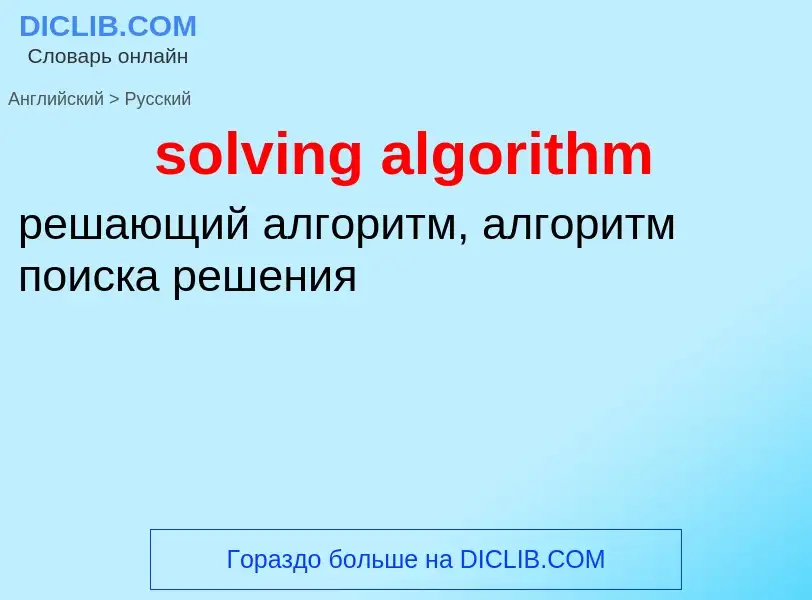Traducción y análisis de palabras por inteligencia artificial ChatGPT
En esta página puede obtener un análisis detallado de una palabra o frase, producido utilizando la mejor tecnología de inteligencia artificial hasta la fecha:
- cómo se usa la palabra
- frecuencia de uso
- se utiliza con más frecuencia en el habla oral o escrita
- opciones de traducción
- ejemplos de uso (varias frases con traducción)
- etimología
solving algorithm - traducción al ruso
общая лексика
решение проблем(ы)
принятие решений
этология
решение задач (в экспериментах по научению)
бухгалтерский учет
функция принятия решений
математика
решение проблем
Смотрите также
Definición
Wikipedia
TRIZ (; Russian: теория решения изобретательских задач, teoriya resheniya izobretatelskikh zadach, lit. "theory of inventive problem solving") is “the next evolutionary step in creating an organized and systematic approach to problem solving. The development and improvement of products and technologies according to TRIZ are guided by the objective Laws of Engineering System Evolution. TRIZ Problem Solving Tools and Methods are based on them.” In another description, TRIZ is "a problem-solving, analysis and forecasting tool derived from the study of patterns of invention in the global patent literature". It was developed by the Soviet inventor and science-fiction author Genrich Altshuller (1926-1998) and his colleagues, beginning in 1946. In English the name is typically rendered as the theory of inventive problem solving, and occasionally goes by the English acronym TIPS.
Following Altshuller's insight, the theory developed on a foundation of extensive research covering hundreds of thousands of inventions across many different fields to produce a theory which defines generalizable patterns in the nature of inventive solutions and the distinguishing characteristics of the problems that these inventions have overcome.
An important part of the theory has been devoted to revealing patterns of evolution and one of the objectives which have been pursued by leading practitioners of TRIZ has been the development of an algorithmic approach to the invention of new systems, and to the refinement of existing ones.
TRIZ includes a practical methodology, tool sets, a knowledge base, and model-based technology for generating innovative solutions for problem solving. It is useful for problem formulation, system analysis, failure analysis, and patterns of system evolution. There is a general similarity of purposes and methods with the field of pattern language, a cross discipline practice for explicitly describing and sharing holistic patterns of design.
The research has produced three primary findings:
- Problems and solutions are repeated across industries and sciences
- Patterns of technical evolution are also repeated across industries and sciences
- The innovations used scientific effects outside the field in which they were developed
TRIZ practitioners apply all these findings in order to create and to improve products, services, and systems.



